How to Reduce Noise in a Restaurant
The sizzling of food, the clatter of cutlery, and the chatter of customers. Restaurants see their fair share of noise, and this isn’t necessarily a bad thing. But too much noise can quickly become an annoyance for customers, and can even pose a danger to your staff. That’s why restaurant design guides say controlling noise is essential to maintaining a safe, welcoming, and comfortable dining room environment for everyone.
Today, we’ll be exploring the impact noise can have on customers and staff, as well as how you can reduce noise in your restaurant to improve the dining experience for everyone.
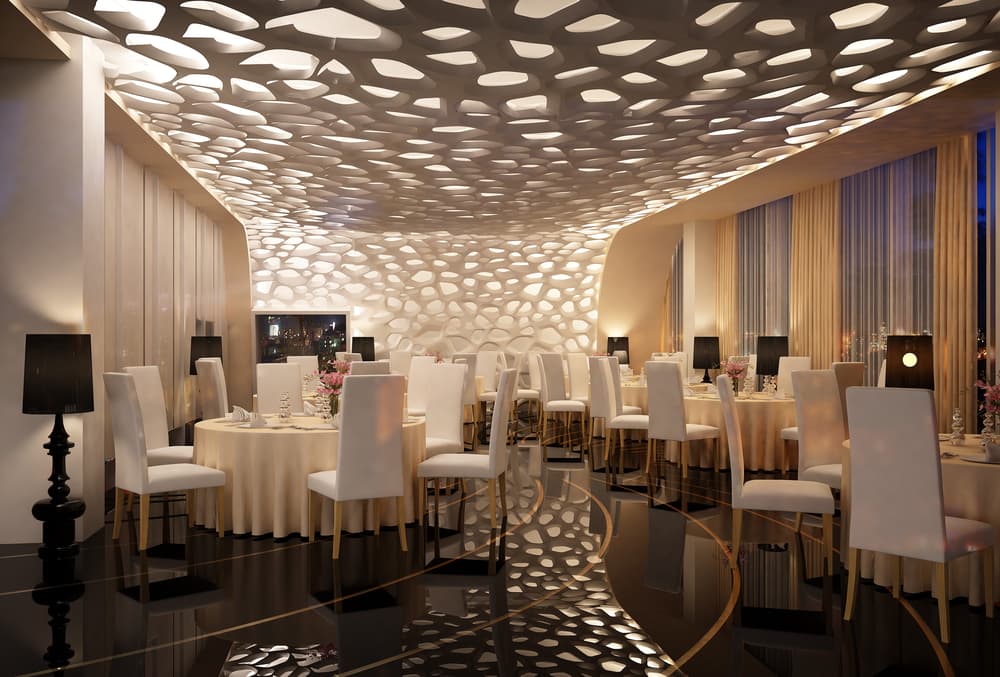
Sound Absorbers for Restaurants
With so much going on in your restaurant, a little bit of noise can always be expected – and may even be a good thing. But excessive noise can quickly turn an otherwise pleasant dining experience into a nightmare. A loud restaurant may struggle to attract customers, or may discourage guests from returning to you in the future – or recommending you to their friends.
To counteract this, many restaurant owners install sound dampening technology in the dining area to help reduce restaurant noise and improve sound quality. But before we explore some of the top acoustic solutions for restaurants, it’s important to first understand why restaurant noise reduction is so important.
Below, we’ll be exploring some key statistics outlining how noise levels can impact the customer experience, as well as the health of your staff.
Restaurant Acoustics – The Statistics
Explore the statistics below to discover some of the hidden effects of restaurant noise issues and loud music in the dining room:
- Restaurant noise ratings typically range between 50 dB and 88 dB
- Safe Work Australia recommends that every 3 dB increase in noise level should halve the time staff are exposed to it without ear protection. For example, staff should not be subjected to 85 dB for longer than 8 hours, while at 88 dB, that number is slashed to 4 hours.
- According to Paul Battaglia – based on patron surveys – the optimal range for reverberation times in a restaurant is between 0.5-0.7 seconds.
- A study in Norway found that acoustical problems were particularly pronounced in canteens, restaurants, and cafes, with 52% of people with impaired hearing reporting that they were ‘severely’ or ‘much’ disturbed by noise in these spaces.
- The same study found that 51% of hearing impaired people reported often/always experiencing difficulties having a proper conversation in places such as loud restaurants.
- A study conducted in French bars explored how loud music influenced behaviour and alcohol consumption. Both men and women appeared to consume more alcohol as the noise level increased within the room. Customers were also found to drink quicker as the music level increased.
- Studies have found that noise levels can influence food perception, with food tasting less intense in noisy restaurants.
- Fiegal et al. explored how the type of music played in a restaurant space could influence food perception. Flavour pleasantness and the overall impression of food stimuli increased in the presence of jazz music, for example.
The Lombard Effect
The Lombard Effect refers to the tendency for people to raise their voice in order to overcome high ambient noise levels. By raising their voice, speakers unintentionally increase the noise level further, causing others to raise their voices as well. The resulting feedback loop leads people to continuously contribute to ambient noise levels, causing the room to get louder and louder.
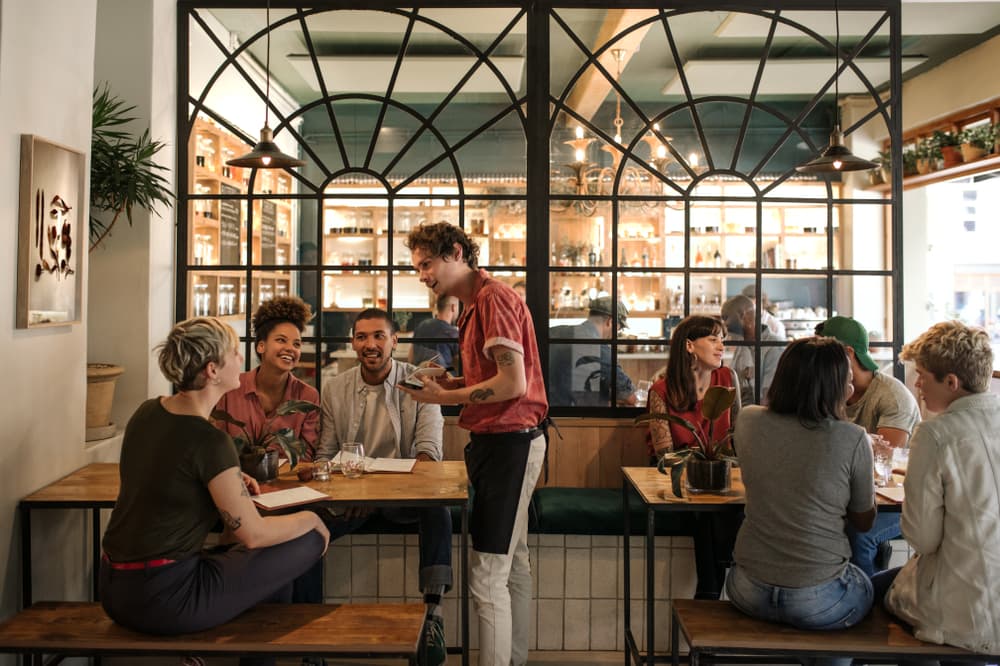
The Cocktail Effect
The brain has a remarkable ability to focus on a particular stimulus while filtering out all others. This can be seen when a person is able to focus on a conversation in a busy room.
However, with loud noise levels, it becomes increasingly difficult to distinguish between voices and understand speech. When voices are at a similar level to the background noise, or they start overlapping in pitch, it’s much harder to pick out the desired information.
The cocktail effect can impact your guests’ ability to carry on a conversation. It can even reduce your employees’ ability to communicate clearly with one another, potentially resulting in poor service due to misunderstandings. This is why reducing noise is so important to maintaining a pleasant environment for everyone.
Acoustic Solutions for Restaurants
There are many different acoustic solutions for restaurants. Below, we’ll be exploring some popular restaurant soundproofing techniques and technology for controlling the noise in your establishment.
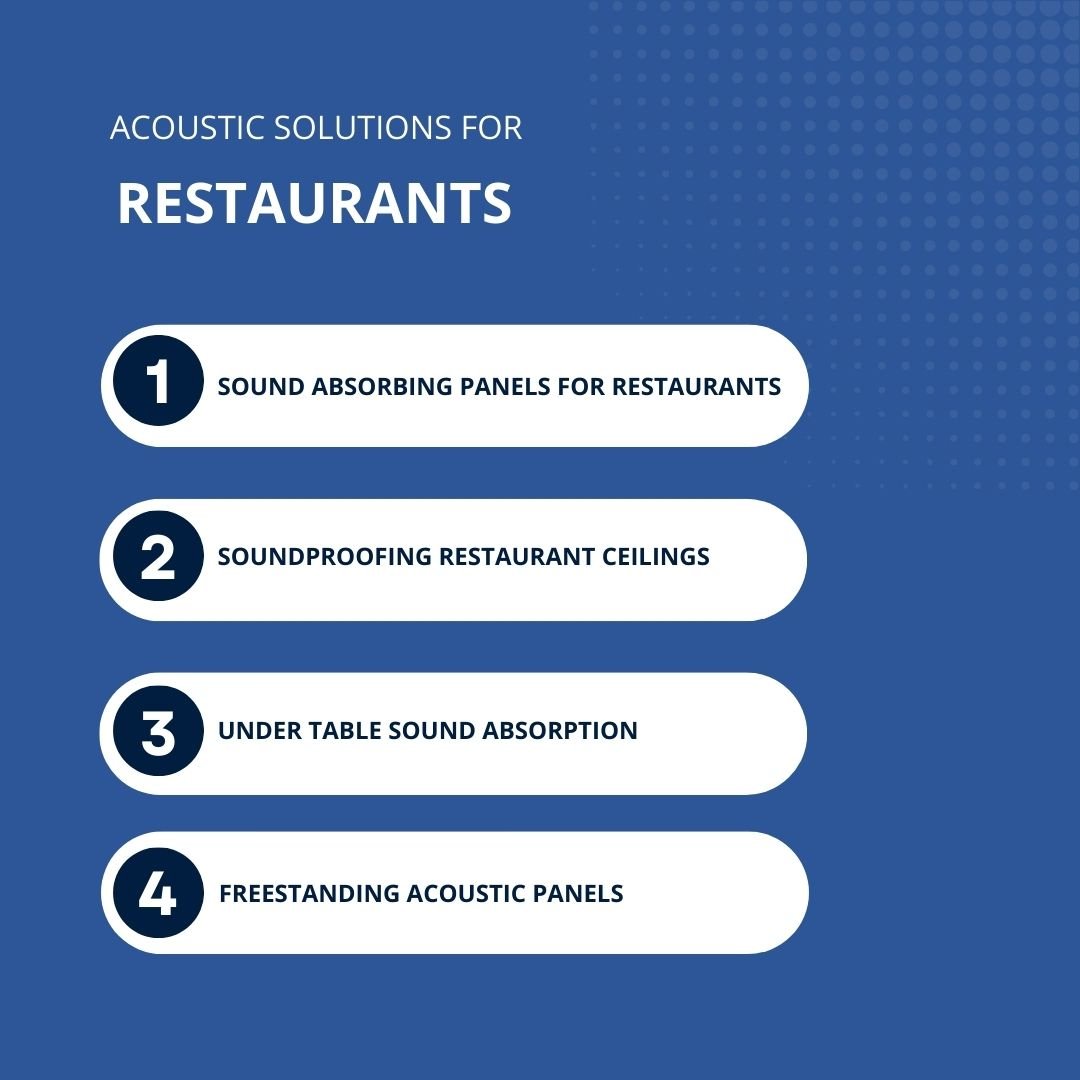
Sound Absorbing Panels for Restaurants
A popular restaurant noise reduction solution is to install sound dampening panels on the walls. Typically made from acoustic foam or polyester fibre, these fabric covered wall panels are designed to absorb sound, minimising reverberation and amplification by reducing how much sound bounces off hard surfaces in the room.
Sound absorbing wall panels can be integrated into the design of dining rooms simply by choosing colours and shapes that match the decor of the room. You can even turn sound absorbing panels into a decorative feature by creating patterns of varied colours, or even arranging them into an image.
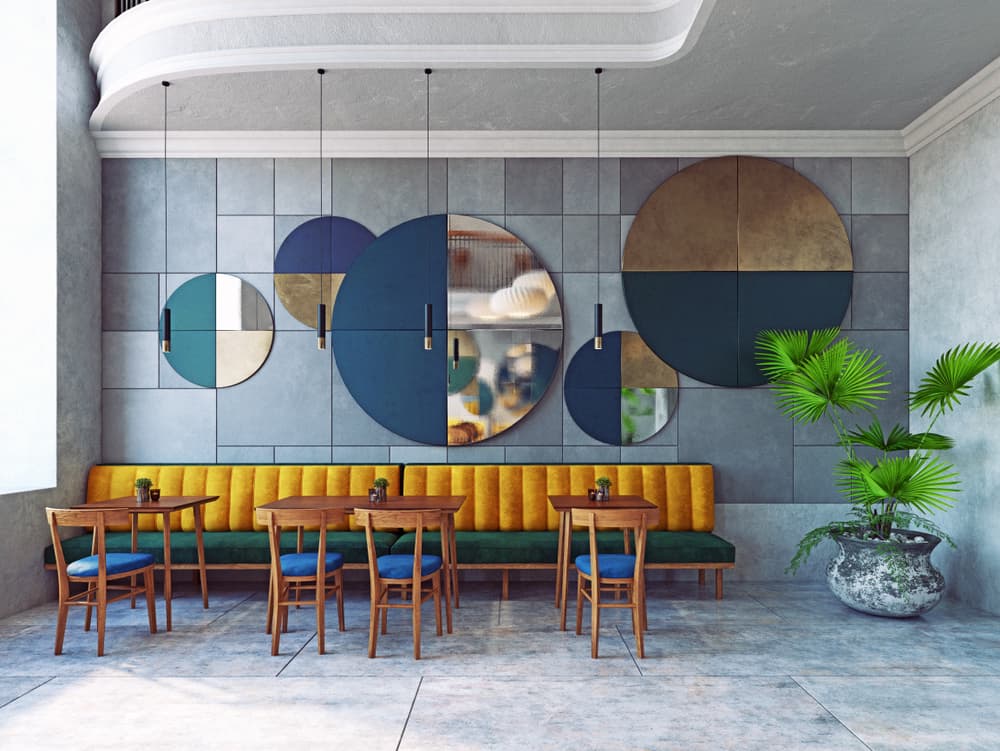
Soundproofing Restaurant Ceilings
It’s a simple fact that the more hard surfaces you’re able to cover with sound dampening materials, the more you’ll be able to absorb and control noise in your restaurant.
If you’re concerned about covering your walls with panels, there are plenty of sound absorbing solutions for ceilings as well. Ceiling panels can be a much more subtle solution, allowing you to decorate your walls and maintain a consistent style throughout the room.
When fitting your walls and ceiling with acoustic panels, keep in mind the atmosphere you wish to create. A room that’s too quiet can seem stuffy and awkward, and may even leave customers feeling uncomfortable about carrying on a conversation as they eat. A little bit of residual noise, on the other hand, can mean a more welcoming and natural environment for everyone.
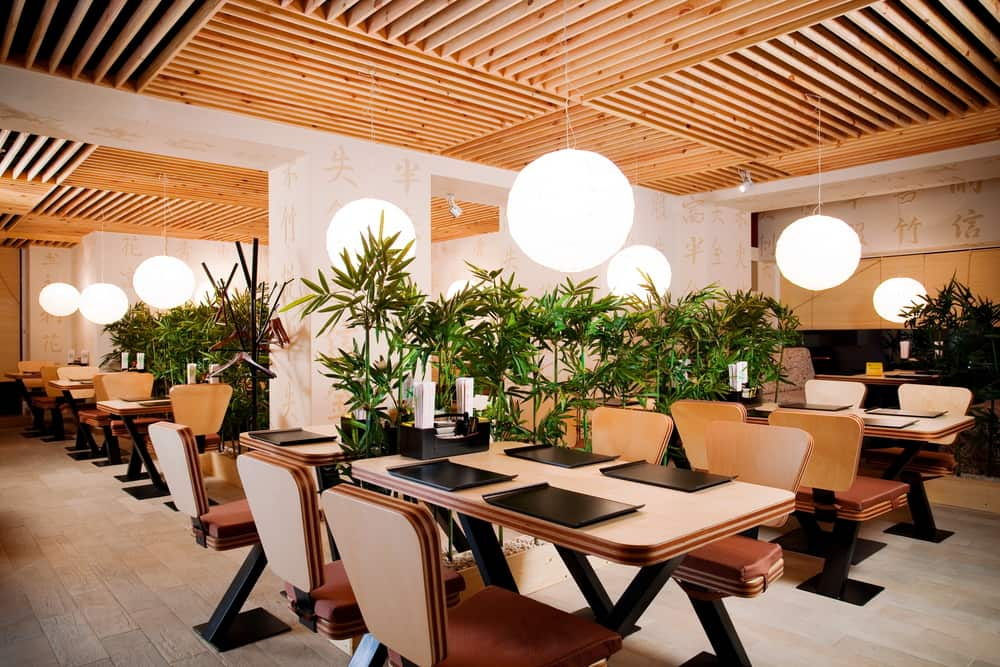
Under Table Sound Absorption
If you’re concerned about acoustic wall panels and sound absorbing ceiling tiles interfering with the style of your restaurant, you may be tempted to seek out more subtle options to reduce noise, such as hidden acoustic treatments on the underside of your tables and chairs.
While this may seem like a clever and attractive acoustic solution, in reality, it can be limited in its ability to control noise levels in your restaurant. Panels and acoustic treatments need to be exposed to sound waves in order to absorb them. By hiding the sound dampening materials away, they won’t make contact with nearly as much sound as soft ceiling and wall panels.
Such treatments may assist with floor-level noise reduction such as scraping chairs and footsteps, but a similar if not better effect can be achieved by carpeting your floors and putting rubber caps on chair legs.
Freestanding Acoustic Panels
Perhaps a more versatile acoustic solution for restaurants is to set up acoustic panels to act as noise barriers throughout your space. Mobile restaurant soundproofing products can be rolled into position as a temporary sound isolation system during private events or the busy lunch rush. This allows you to manage restaurant noises while still enjoying the freedom to pack them away and open up the space when needed.
Unlike wall and ceiling panels, freestanding partitions fitted with acoustic fabric can absorb noise while doubling as a visual barrier between tables and high traffic areas. They can also be used to block access to staff-only areas, or to disguise toilets, storage closets, and other spaces that diners may not wish to look at as they eat.
Alternatively, partitions made from hard, sound blocking materials such as polycarbonate can create temporary function rooms while containing excess noise. These sound barriers can reduce noise levels in your restaurant, causing less disruption to patrons in the general dining area.
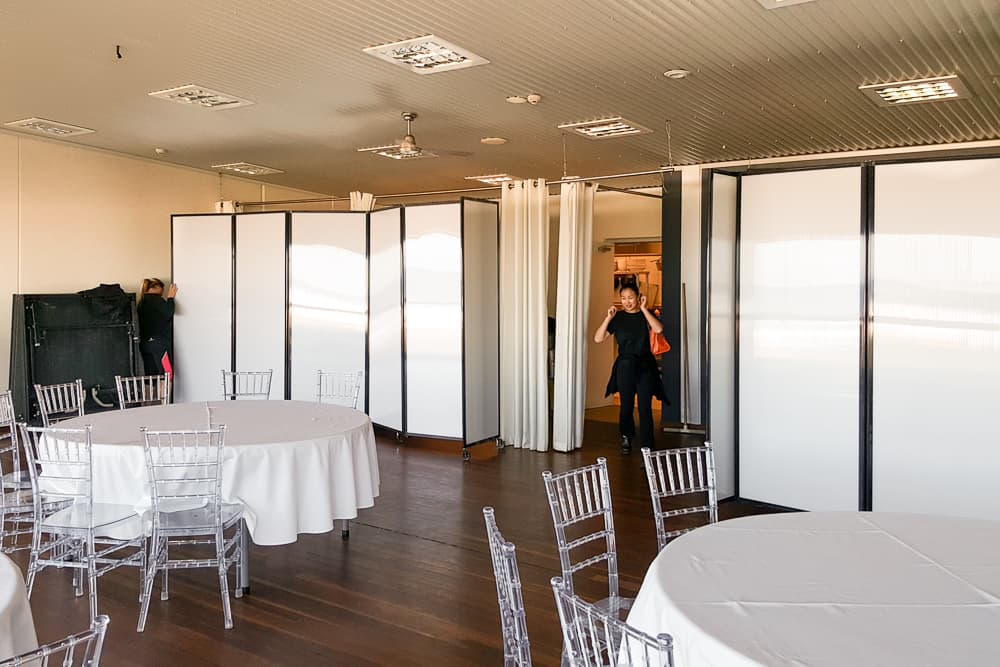
Music in a Restaurant
When playing music in restaurant dining rooms, you’ll need to decide between background music and foreground music. If, for example, music is central to the dining experience, it should be played loud enough to keep your customers’ attention without them having to strain to hear. In musical restaurant spaces, careful attention must be paid to table placement, sound quality, and the acoustics of the room so everyone can sit and enjoy the performance.
If you would like your customers to chat over their meals, then your music should be a lot quieter and more subtle. The noise level of a normal conversation is roughly 60 dB, so we recommend your background music be played no louder than this to ensure it doesn’t interfere with verbal communication.
Don’t forget, the style of music you play may also influence the dining experience, and even your customers’ experience of their food. Jazz, for example, may encourage greater enjoyment – though you’ll need to consider your restaurant’s theme to ensure you choose a music style that isn’t out of place.







